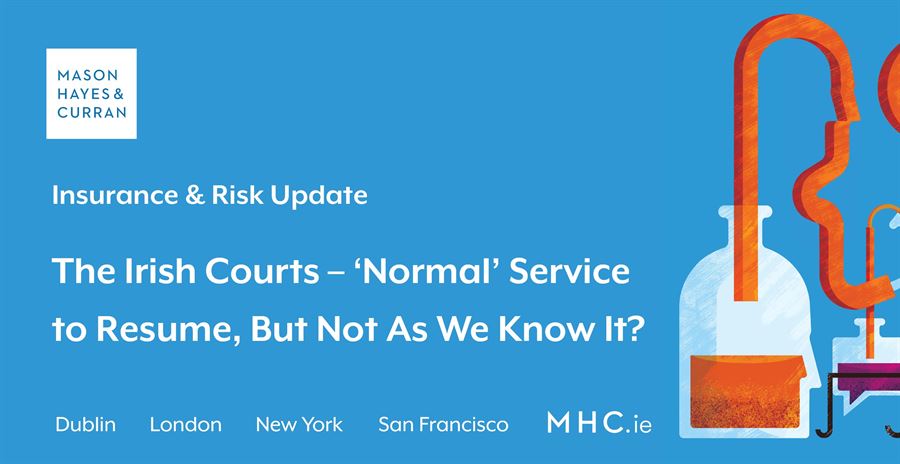
The Courts Service has made a number of statements recently on the steps being taken to reopen courthouses and resume physical hearings and applications.
Limited capacity
What is clear from the various statements is that it is not possible to take a one size fits all approach. Courthouses across the country vary in size and social distancing requirements will affect each one differently. We can already see from the courts website that the daily court lists now include quotas for the numbers who can be in attendance in the various four courts courtrooms. By way of example, we understand that the largest court room in the Four Courts will have a maximum capacity of 15 people.
There is a clear necessity to limit the number of people present in a courtroom, however, it remains to be seen how it might work in practice. If there are a judge and registrar, possibly a stenographer, two barristers - or four, depending on the case, two solicitors, the plaintiff and the defendant(s), – there will be obvious restrictions on witness numbers. It will be very difficult to have witnesses in court to view the evidence of other witnesses, which is sometimes necessary. It is also unlikely to allow for members of the public or journalists to attend due to the capacity restrictions, although this will have to be facilitated in some capacity in order to comply with the requirement that justice be done in public.
What will courtrooms look like?
The Courts Service has said that courtrooms are being fitted with Perspex screens in front of the bench and hand sanitisers will be provided for judges. The use of face masks is currently being considered in line with government guidelines. One suggestion is that when a court is sitting in one courtroom, those listed for the next case will be allocated to the adjacent courtroom which will be used as a waiting area.
Physical attendance at call overs and the “lottery” for the allocation of judges in personal injuries cases is unlikely to be possible. Some courthouses will implement a one way system of people through the building and clusters of people will not be permitted. The usual buzz of settlement talks in the Law Library will be a thing of the past!
Shorter hearings
An important feature of the Courts Service planning is that they are looking at practical solutions to reduce the time required to hear a case. In terms of interlocutory applications, some of the courts have asked that any consent orders be emailed to the registrar in advance of the hearing. We note that the High Court will start hearing these applications on 27 July 2020.
It also appears that County Registrars around the country are resuming hearing applications, many allocating specific time slots to reduce the number of people in the courtroom at any given time.
The use of virtual hearings is also set to be extended over the coming weeks and any cases proceeding by physical hearing will be listed at staggered times. In a statement on 20 May 2020, the Chief Justice Frank Clarke directed that physical court hearings should be limited to a maximum of 2 hours per day until there are further guidelines available from the government. This direction was short lived, however, and there has since been further clarification that 2 hour limitations will not be imposed.
Case management
It will be vital for parties to agree realistic timeframes for the duration of their cases. The Circuit Court in Dublin has asked that parties fill out a case management questionnaire and/or a statement of fact in advance of the hearing or of even applying for a hearing date. This may assist the Courts Service in identifying cases which are appropriate for a virtual hearing. It will also assist in narrowing down the issues between the parties, which in turn will reduce the duration of the hearing. The exchange of witness statements and the submission of an agreed statement of fact has long been utilised for the purpose of efficiency in the Commercial Court. Perhaps it may have to be considered as the way forward in the personal injuries lists in these unprecedented times.
Conclusion
It is clear that there are a number of difficulties faced by the Courts Service in getting back to business. It is certainly going to be a stark difference from the court experience that we are all accustomed to. The manner in which business is conducted; even outside the courtroom is set to change. We look forward to monitoring the developments as physical hearings resume and perhaps the silver lining of this crisis will be an increased efficiency in the manner in which cases progress going forward.
For more information on successfully progressing litigation through the Irish courts, contact a member of our Insurance & Risk team.
The content of this article is provided for information purposes only and does not constitute legal or other advice.






